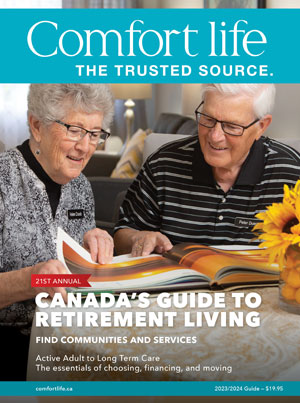Do you have a Tax Free Savings Account?
Ever wondered what life would be like without taxes? Well, in Canada, a Tax Free Savings Account (TFSA) is about as close as you can get.
“It doesn’t get better than this,” says Chartered Accountant Tina Di Vito, Vice President and Director, Retirement Strategies with BMO Financial Group in Toronto. “In a TFSA, growth is essentially ignored for tax purposes – something Canadians have never had before. Used in the right way, the prospects for making and saving money are unlimited.”

It’s been a few years since these gifts-from-government were established, so the rules bear repeating. Here, Di Vito gives us the basics of TFSAs…and a few tips for making the best use of them.
You must do the paperwork - TFSAs are registered accounts, and must be officially set up the way a Registered Retirement Savings Plan (RRSP) is. Banks, credit unions and financial institutions of all types can establish a TFSA that’s right for your lifestyle and savings strategy. You must be at least 18 years of age, a Canadian resident for tax purposes and have a social insurance number (SIN).
You don’t need to be working to have a TFSA - Contribution room, now at a rate of $5,000 a year, starts to accumulate automatically. No income attribution rules apply to TFSAs.
Call it a Tax Free Investment Account - Contributions to TFSAs are in post-tax dollars, but any of the earnings that come from investing those dollars is tax-free. Growth in a TFSA also builds contribution room when you withdraw earnings and then want to recontribute them.
Build a shopping cart of investment vehicles - With certain rules and exceptions, a TFSA can hold the same kinds of products as an RRSP – stocks, bonds, mutual funds and more. A trained financial advisor can show you how a TFSA can be part of an overall investment plan or strategy.
TFSAs have no impact on government benefits - Old Age Security, the Age Credit, income supplements or any other income-tested program is not affected by the existence or amount of money in a Tax Free Savings Account. Benefits cannot be clawed back or disallowed because you have a TFSA.
Timing contributions can be tricky - Those who qualify can contribute $5,000 a year, beginning in January of the tax year in question. You can withdraw funds during the year, but if you do, you must wait until the start of the next year to recontribute them. Transfers of funds can be done between TFSA products or institutions within the current year, but be sure all of the proper paperwork is done so the Canada Revenue Agency knows it's a true transfer. Otherwise it could mistakenly think you've withdrawn and recontributed too soon and assess you with overpayment penalties.
A loss is a loss - You can keep what you earn in a TFSA, but you have to keep what you lose, too. Any losses you incur cannot be used to offset any capital gains you might have outside your TFSA.
Couples get double - Yes, that’s $10,000 worth of contribution room each year. And while you can’t have a joint TFSA, you can be each other’s beneficiary.
By The Institute of Chartered Accountants of Ontario


